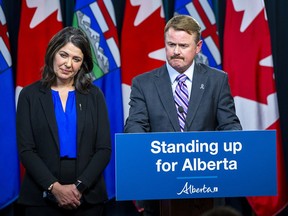Opinion by Special to National Post •
The ongoing hearings of the Senate’s standing committee on human rights has confirmed years of allegations that the Canada Revenue Agency (CRA) has been disproportionately targeting Muslim charities, and has raised troubling questions regarding the government’s own investigation into the issue.

Tim McSorley: Canada's persecution of Muslim charities must stop© Provided by National Post
More than a year ago, multiple reports were released exposing the CRA’s disproportionate auditing of Muslim charities, under the guise of preventing terrorist financing.
In a May 2021 report , the Ottawa-based International Civil Liberties Monitoring Group (ICLMG), which I work for, demonstrated how, for nearly two decades, the CRA has specifically been undertaking audits of Muslim charities, in secret, with no outside review and little accountability.
These controversial audits have been carried out by the CRA’s review and analysis division (RAD), which was established in 2003 , based on prejudiced and unsupported allegations that some charities may be funnelling money to terrorist organizations. The audits have resulted in numerous non-profits losing their charitable status.
RAD’s troubling practices were formalized as official policy in the Canadian government’s 2015 national risk assessment (NRA) for terrorism financing in the charitable sector, which focuses almost exclusively on Muslim charities, and entirely on charities based in racialized communities, with little to no public substantiation of the risk.
Since then, the CRA has used the NRA to further justify surveillance, monitoring and audits of leading Muslim charities on questionable and, as the ICLMG report argues, prejudiced grounds that equate a community’s faith or the faith of its donors and beneficiaries with the risk that they may engage in terrorist financing.
The CRA’s director general of the charities directorate, Sharmila Khare, has finally confirmed the findings. In her recent testimony before the Senate committee on human rights, she explained that, “If you look at the risk actors and the current risk environment in Canada, I think you could reach the conclusion that many of the organizations that are listed in the national inherent risk assessment do come from racialized communities.”
Between 2008 and 2015, the only period for which there is public information, ICLMG research found that 75 per cent (six out of eight) of the organizations that had their charitable status revoked by RAD were Muslim charities. This is despite Muslim charities only making up around 0.47 per cent of all charities in Canada (as of 2015).
The CRA’s assistant commissioner, Geoff Trueman, provided updated statistics during the same recent Senate committee meeting that, to date, RAD has revoked the status of 14 charities, and confirmed that the ICLMG’s findings regarding the number of Muslim charities are correct.
Interestingly, though, none of these revocations have resulted in charges of terror financing or terrorist activities against the organizations or their board members.
RAD is a firmly entrenched player in Canada’s national security landscape. It works directly with CSIS and the RCMP, sharing information and even exchanging staff.
The legislative powers given to RAD have been used to amplify surveillance, monitoring and audits of leading Muslim charities, based on questionable, unjustified and unproven accusations, but unlike the RCMP and CSIS, there is no oversight. RAD is not required to disclose the true reason for an audit to the charity or the public, and has refused to provide this information to the Office of the Taxpayer Ombudsperson.
In fact, in recent stunning testimony before the Senate committee on human rights, the ombudsperson went further , saying that key aspects of his review of this issue — mandated to him to great fanfare by the prime minister and finance minister — are being hindered due to a lack of access to information. He agreed with a senator who noted that he seems to be “working with one hand tied behind his back.”
To overcome these issues of secrecy and systemic discrimination, CRA and RAD must be subject to independent review and accountability. To that end, it is crucial that Parliament acts to ensure that there is oversight of RAD’s work, like any agency with a national security mandate.
The ICLMG and others in the charitable sector have called for an immediate review of the CRA and RAD’s work, ideally by the National Security and Intelligence Review Agency, accompanied by a moratorium on audits of Muslim charities by RAD.
If Prime Minister Justin Trudeau stands by his promise to take this matter seriously, it is now up to him to act.
National Post
Tim McSorley is the national co-ordinator of the International Civil Liberties Monitoring Group, a cross-Canada coalition of 45 NGOs, unions, professional associations, faith groups, environmental organizations, human rights and civil liberties advocates.












